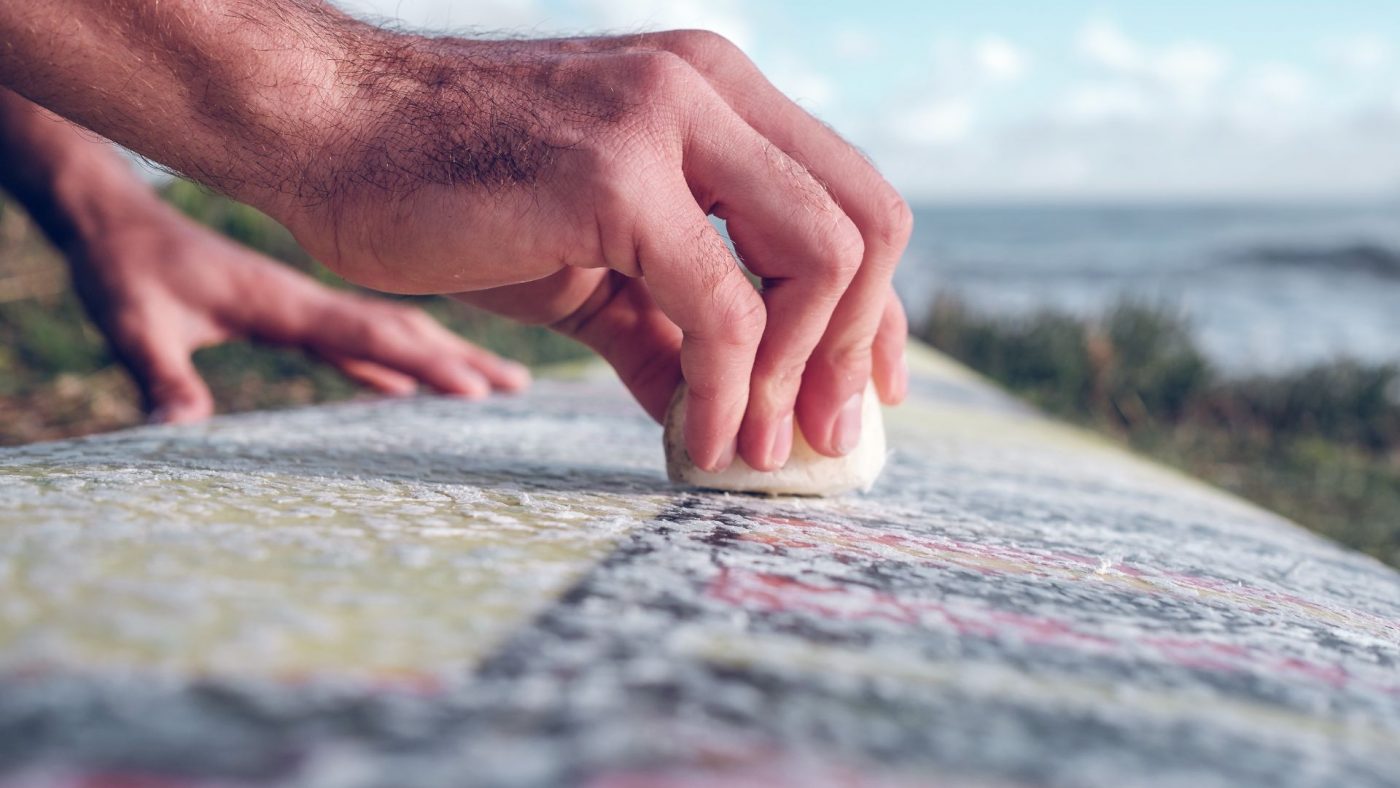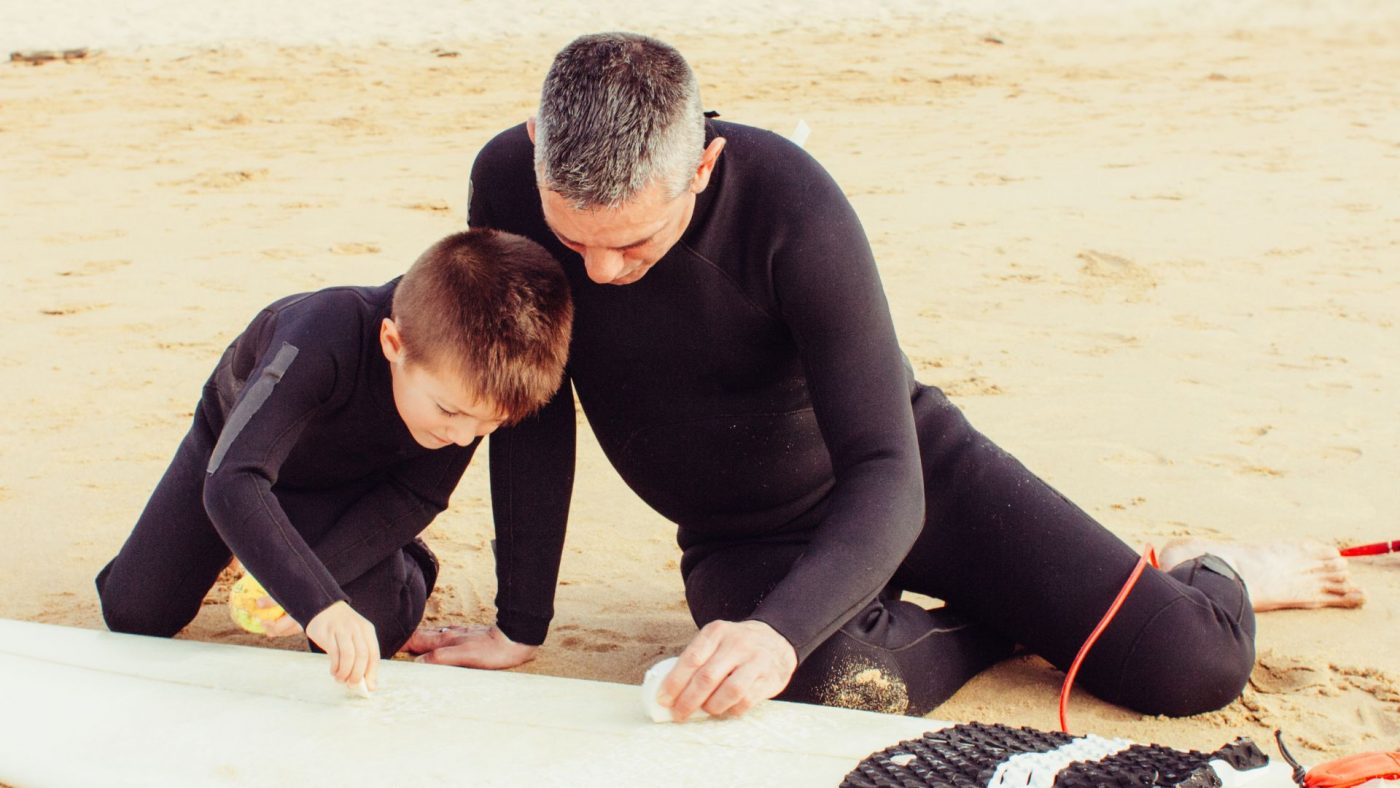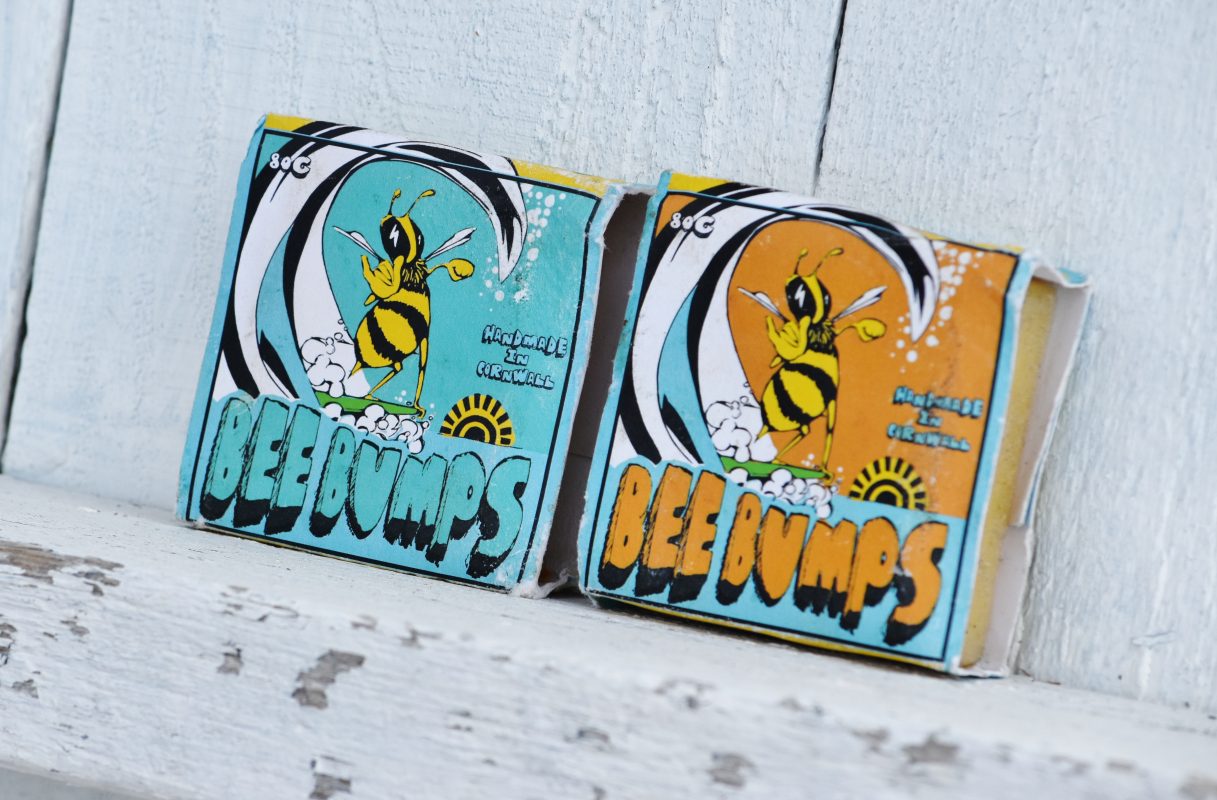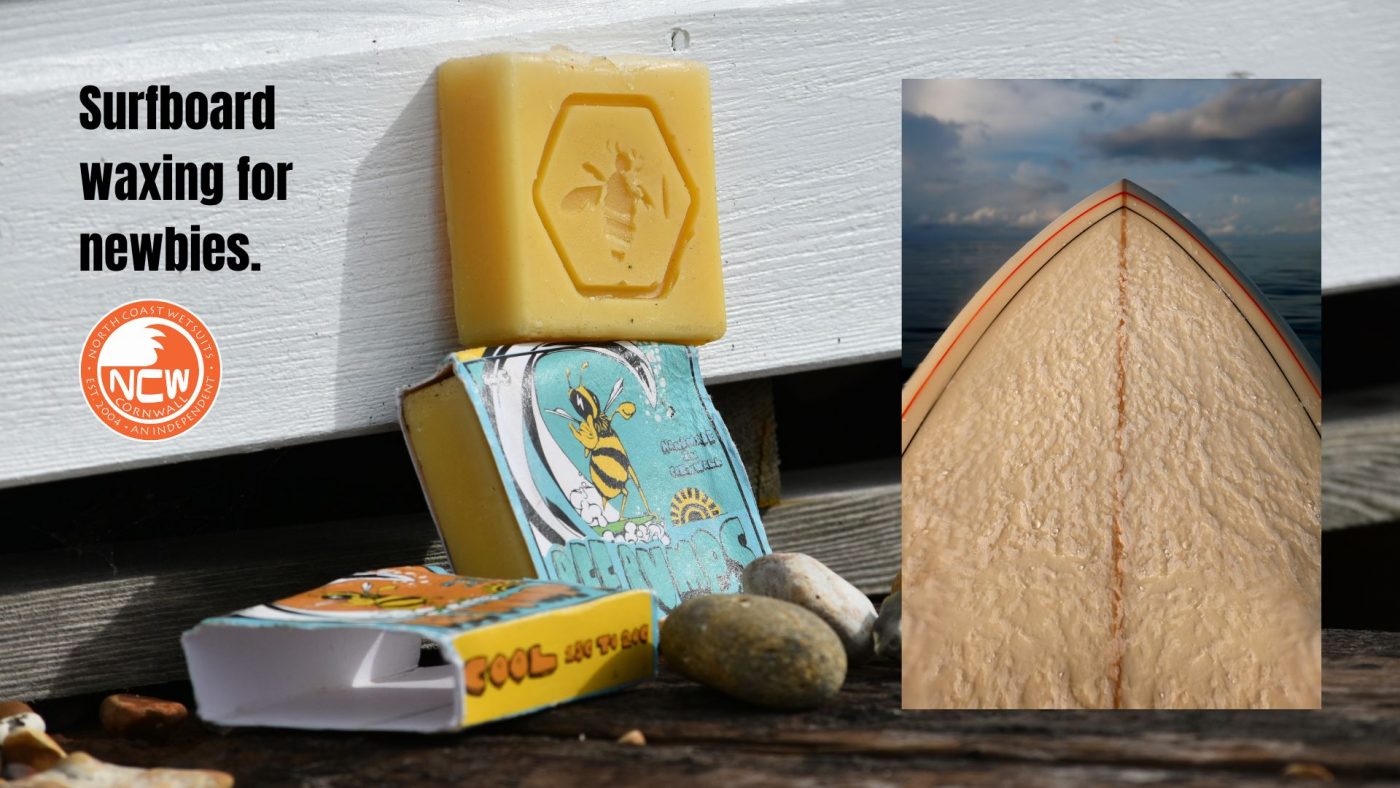Surfboard waxing is an important part of your surfing routine. You may want to wax the whole board’s deck or use a combination of traction and wax. In all instances grip is important.
Surfboard waxing and temperature.
Surfboard wax comes in different types according to the environment you’re riding in. Air and water temperature dictates the hardness of the wax you choose. Get it wrong and you may end up with a sticky, gooey mess that doesn’t deliver any grip.

UK sea temperature is 6-10 degrees in winter and 15-20 degrees in summer. All year round surfing will require two lots of wax. Cold water wax in the off season(s) with the potential for cool water wax in summer.
Note: always check what the average seasonal water temperature is when travelling overseas and choose your surfboard wax accordingly.
Applying surfboard wax.
Surfboard wax should be applied to a clean and debris free deck. If your board’s new then it’ll be easy. For boards with a coat of wax already in place it’s best to remove what’s already there and start over.

Once your board’s deck is clean apply those bumps! Drag your wax across the board in a smooth, even diagonal line. Repeat the process in the opposite direction until you have a solid wax base. Keep going until the wax begins to glide freely as the bumps start to mound up. This ‘catch’ part is when bumps start to form. Stop once you have enough thickness in those bumps.
Surfboard waxing and the environment.
Unfortunately, much surfboard wax isn’t environmentally friendly. Therefore, we’d urge you to choose a product that lessens the impact on the planet.

Here at NCW, we stock Bee Bumps Surf Wax. Made sustainably by our nature’s friends – bees – Bee Bumps Surf Wax is produced I’m small batches here in Cornwall. It offers plenty of traction, looks/smells great and helps the planet. So, when choosing surfboard wax we’d urge you to go down a route like this and ‘bee a greener surfer’.
You can find Bee Bumps Surf Wax over in the NCW shop here.

